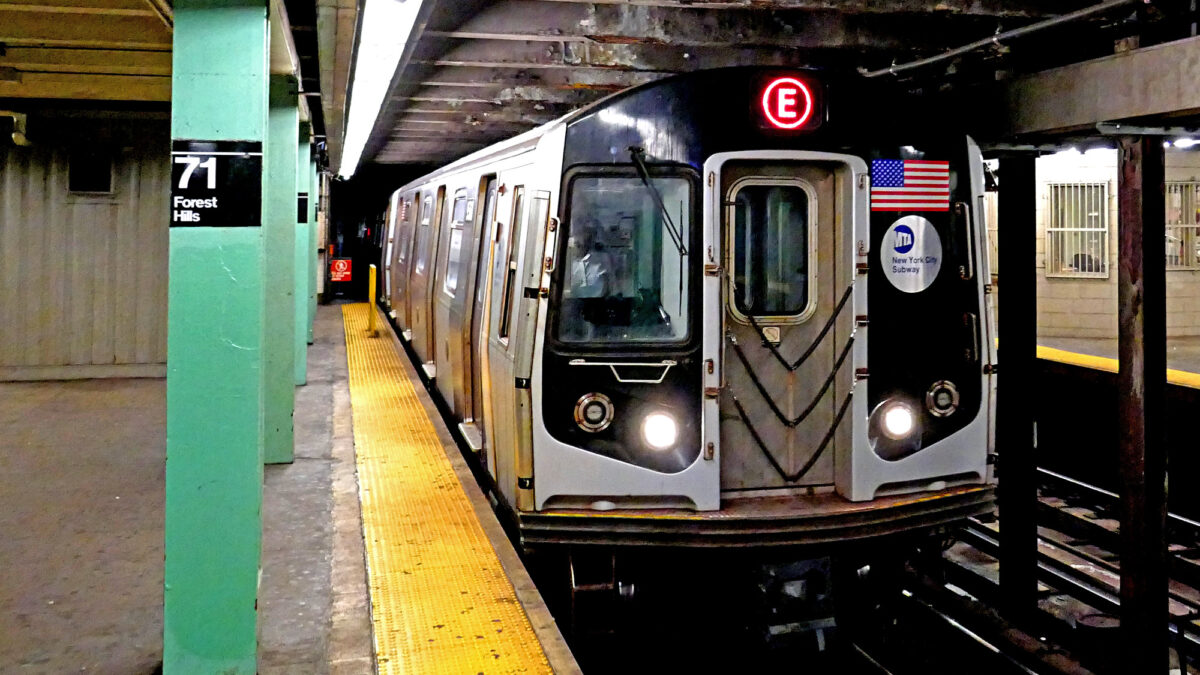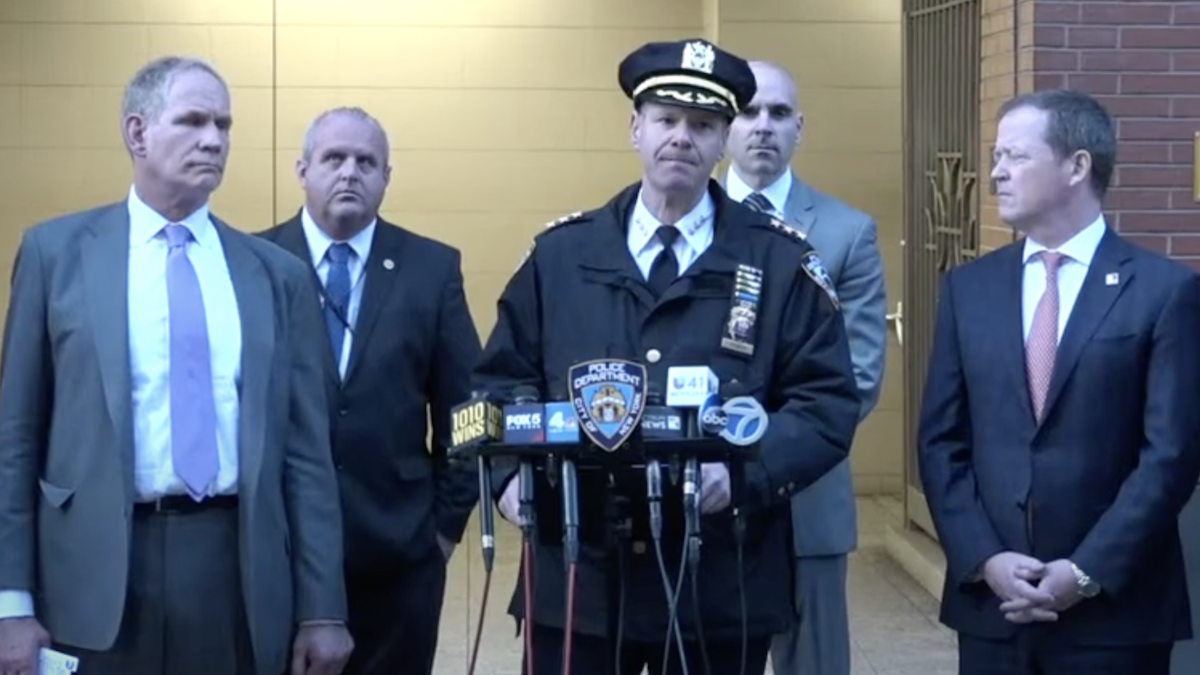
The deterioration of New York City’s subway system shows us what happens when we confuse “social justice” for justice.
Last week, I got off the L at Bedford Avenue to a commotion. It’s not unusual in New York City to disembark the subway to the sounds of a street musician or a scuffle, but this was different, more visceral. These were shouts of real distress.
They came from a homeless man sitting on the lip of the platform, legs hanging tentatively over the edge. He grasped the ledge with one hand and his chest with the other, howling as he leaned toward the tracks to check for the oncoming train. A commuter passing by reached out his hand to help.
“No, don’t touch me!” warned the homeless man, recoiling from touch, leaning further over the edge.
“Hey, don’t do this,” the commuter implored. I took out my phone to dial 911 as people pushed hurriedly toward the exits, busy with their daily lives while the homeless man considered the end of his.
I could hardly blame them, whether it was fear propelling them up the stairs or just plain desensitization. By New York standards, this was hardly a notable instance. The veins of the country’s most populous city have become increasingly bloody amid layers of social “reforms” that lead to crimes going unpunished and the mentally ill loosed on the streets.
New York City Is Increasingly Dangerous
In 2021, a man deemed the “A-train ripper” went on a 14-hour stabbing spree, killing two and injuring two more. In January, a young woman died after she was pushed onto the tracks at Times Square. Two people were bludgeoned with hammers in separate 2022 attacks, and in March, a man was released by a judge after smearing feces in the face of a commuter.
And then April 12, 2022. Frank James threw two smoke grenades and opened fire on a train full of people entering the 36th Street station in Sunset Park, Brooklyn. Twenty-nine people were injured, including 10 from gunfire.
Stabbings, shootings, suicides, attempted rapes in broad daylight — the list goes on and on. It’s clear that social justice policing is making our city less hospitable, allowing people to roam the subway when they are in need of serious mental help.
Transit crime in New York City is up nearly 60 percent since last year. The staggering statistics reinforce public perception, which only makes the problem worse. As The Atlantic points out, fear of crime begets low ridership, and causes more crime.
Causes of the Crime Spike
Infographics are circulating on social media, offering various explanations for the shooting and crime spike. They place blame at the feet of the New York Police Department (NYPD), calling it a “jobs program,” “political organization,” and an “abject failure.” Others have expressed frustration about Mayor Eric Adams’ recent sweeps of homeless people from subways and encampments, calling it “war,” and stating that he’s “made sadism New York’s official policy.”
I disagree. On the contrary, this crime surge is the result of policymaking by activists, who prioritize “social justice” over justice.
That much is obvious from a cursory glance at James’ rap sheet, which includes nine arrests in New York state for criminal sex acts and theft of service, among others. James was arrested in New Jersey an additional three times for crimes including terrorist threats.
James, a prolific criminal and eminent threat, was allowed to walk free as a direct result of criminal justice reform catalyzed by recent social justice initiatives. Bail reform, or the recent prohibition of cash bail for most misdemeanors and non-violent felonies, is perhaps the most egregious.
Journalist Josh Hammer cites supporting statistics for Newsweek: A 2018 Department of Justice report revealed that 83 percent of prisoners released without bail across a sample size of 30 states were re-arrested at least one time over the next 9 years, with 44 percent of those arrests happening in their first year post-release.
What’s concerning is not just the rate of recidivism, but the nature of the crimes committed: 77 percent of drug offenders released were re-arrested on non-drug-related charges, and 34 percent of these arrests were for violent crime.
‘Criminal Justice Reform’ Making Things Worse
And then there are the policies instituted by soft-on-crime District Attorney Alvin Bragg, who instructed prosecutors to downgrade select felonies (such as armed robbery) to misdemeanors, and not to prosecute people for resisting arrest.
The policy was allegedly intended to decriminalize poverty and alleviate racial tensions. But what was empathetic in theory has been harmful in practice. The effects of this policy change have been devastating for the minority communities it was enacted to protect. In 2022, felony assaults have risen by 21 percent, robbery by 48 percent, and grand larceny by 55 percent.
As for the New York Police Department, Mayor Adams faces an uphill battle to rebuild a system wracked by former New York City Mayor Bill de Blasio’s billion dollar cut to the police’s budget and an uptick in police deaths in the line of duty, which reached a 20-year high in January.
The police are also fighting public perception, as evidenced by a study conducted by the Manhattan Institute. “In surveys, many people say that they think American cops kill 1,000 unarmed black men every year, but the real number averages out to more like 20,” says fellow Robert VerBruggen, “and it’s even lower than that if you just look at suspects who weren’t attacking someone when they were shot.”
Black Lives Matter Shows Contempt for Black Lives
Where do these misconceptions and the ideological underpinnings for these anti-cop, soft-on-crime policies come from? Commentators point to organizations like Black Lives Matter, whose damaging ideas have captivated the hearts and minds of individuals, corporations, and government officials alike.
BLM has made a fortune promoting controversial ideologies like critical race theory, and cultivating racial resentment and division in the name of social justice. When taken to their logical end, these ideas motivate dangerous people like James, who posted racist rants on YouTube and tweeted, “oh black Jesus, please kill all the whiteys.”
The mainstream media is on board with the grift. A Washington Free Beacon study of hundreds of articles from major papers over a span of two years uncovered a startling skew in coverage: white offenders’ race was mentioned in 1 of 4 articles, compared with 1 in 17 articles about a black offender and 1 in 33 articles about a Hispanic offender.
For those desiring justice, or the fair, equal, and impartial treatment of all races under the law, this should disturb you. Until we’re allowed honest conversations about crime, race relations, and data, our situation will worsen. Our city, our subways, will continue to deteriorate.
The homeless man didn’t jump. After several harrowing minutes, he was consoled and helped to his feet. The lone bystander who stopped at the sound of his howls, without regard for his own time or safety, held him until police arrived.
Allowing people who are a danger to others and to themselves to walk free is suicidal. Adams must seize the moment to hold his city in check and fight for the justice that needs no qualifier.









